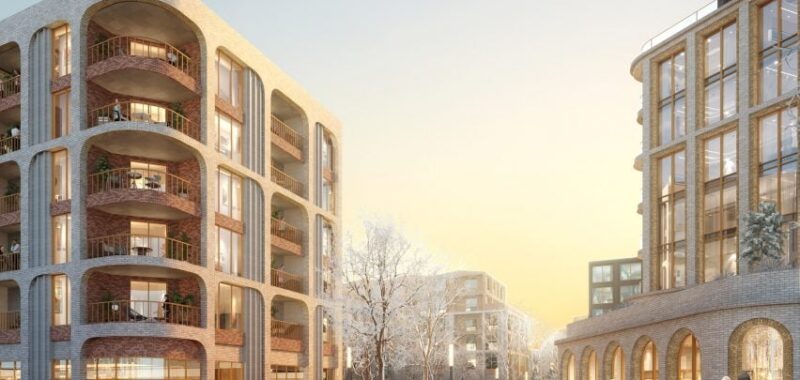
Promotion: London-based architecture studio Cross Works has released architectural guidelines to accompany its masterplan for a major expansion of Tashkent in Uzbekistan.
New Tashkent will see Uzbekistan’s capital grow by 25,000 hectares, nearly doubling its population from around three million to approximately five and a half million.

Cross Works’ masterplan for the project was granted planning permission by the Uzbek government in December, and groundworks are already underway.
Working with the Directorate of New Tashkent, the firm has now issued architectural guidelines for New Tashkent District 1, with the aim of establishing a consistent vision for the area’s design.

The guidelines set the design direction for “everyday” buildings such as villas, townhouses, apartment buildings, offices, retail and community facilities, which will make up most of New Tashkent’s urban fabric.
“By providing clear principles for these essential building types, the architectural guidelines seek to create a cohesive and harmonious urban fabric that meets the functional and aesthetic needs of the communities within New Tashkent’s first phase of development, whilst also giving the new city a unique identity,” Cross Works said.

The guidelines seek to “strike a balance between curated uniformity and individuality, fostering a vibrant urban environment that respects tradition and embraces modernity”, the studio added.
They are less focused on sports stadiums, entertainment destinations and cultural buildings in order to leave space for the possibility of iconic architectural landmarks.
“Cross Works has taken great care to ensure that the architectural guidelines for the new city are neither overly restrictive nor prohibitive,” said lead designer and managing director at Cross Works, Hakan Agca.
“Our intention is to provide a framework for good design, informed by both international standards and the requirements of the Directorate, while allowing for adaptability and evolution with future generations.”

Cross Works’ guidelines will act as planning guidance to be taken into account by the Directorate of New Tashkent when deciding whether to approve development proposals.
They centre around five key considerations: scale, proportion, articulation, openings and materials, and will evolve over time to keep up with changing requirements.
Renderings produced by Cross Works are included to illustrate possible ways of interpreting the guidance. Plans, drawings, 3D-print models, and virtual-reality studies prepared by the studio also feature to help designers visualise the guidelines’ intentions.
“New Tashkent is the largest planning project in Uzbekistan, and an opportunity for us to develop a new language of urban development for the future,” said Saidazim Sharipov, the Directorate of New Tashkent’s head of urban-planning documents.

Known in Uzbekistan as Yangi Toshkent, the new area will be a 15-minute city – meaning residents can access key amenities within a 15-minute walk or bike ride from their home – and the directorate is developing a mobility plan that aims to prioritise pedestrians and cyclists over cars.
Designated green zones are planned to provide shade along walkways and cycle paths, while canals and other water features will be constructed to help moderate the climate.

New Tashkent’s energy will come from solar and hydropower as well as biofuel, with a centralised heating and cooling system intended to significantly reduce overall demand.
Hakan Agca, Saidazim Sharipov and Temur Akhmedo, senior sustainability specialist will present the project on 11 March at property festival MIPIM.
Partnership content
This article was written by Dezeen for Cross Works as part of a partnership. Find out more about Dezeen partnership content here.
The post Cross Works design guidance seeks to ensure unique identity for New Tashkent appeared first on Dezeen.

